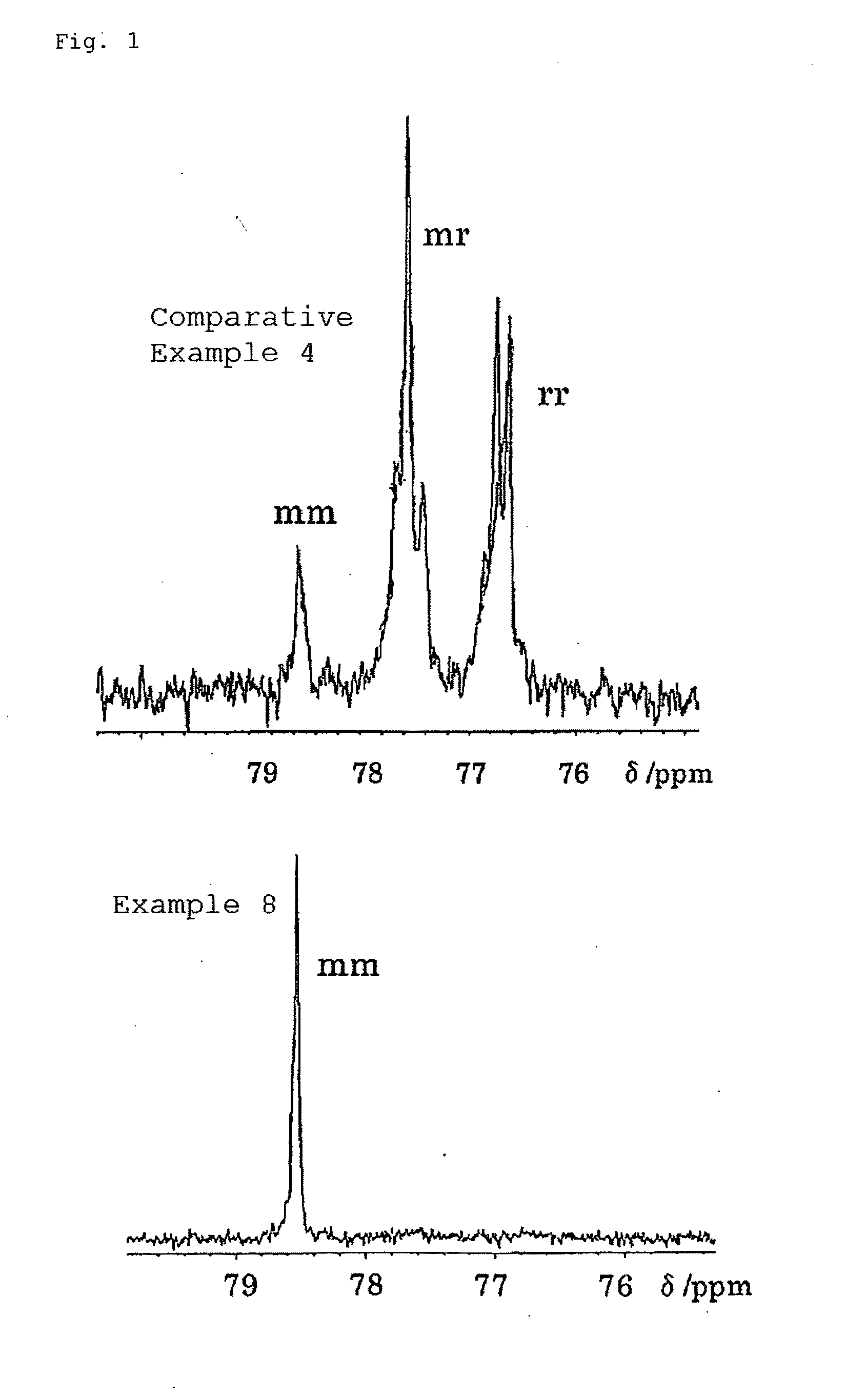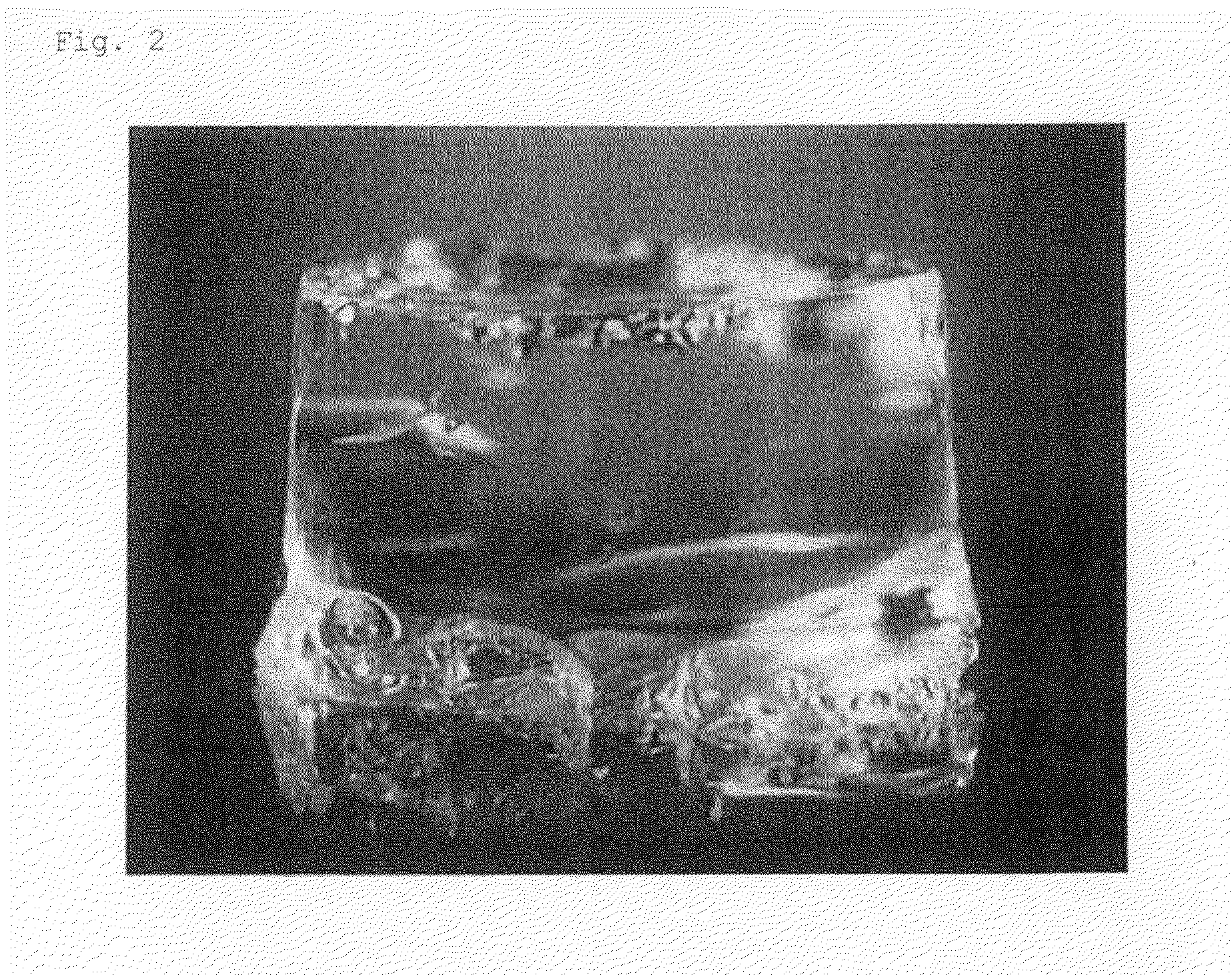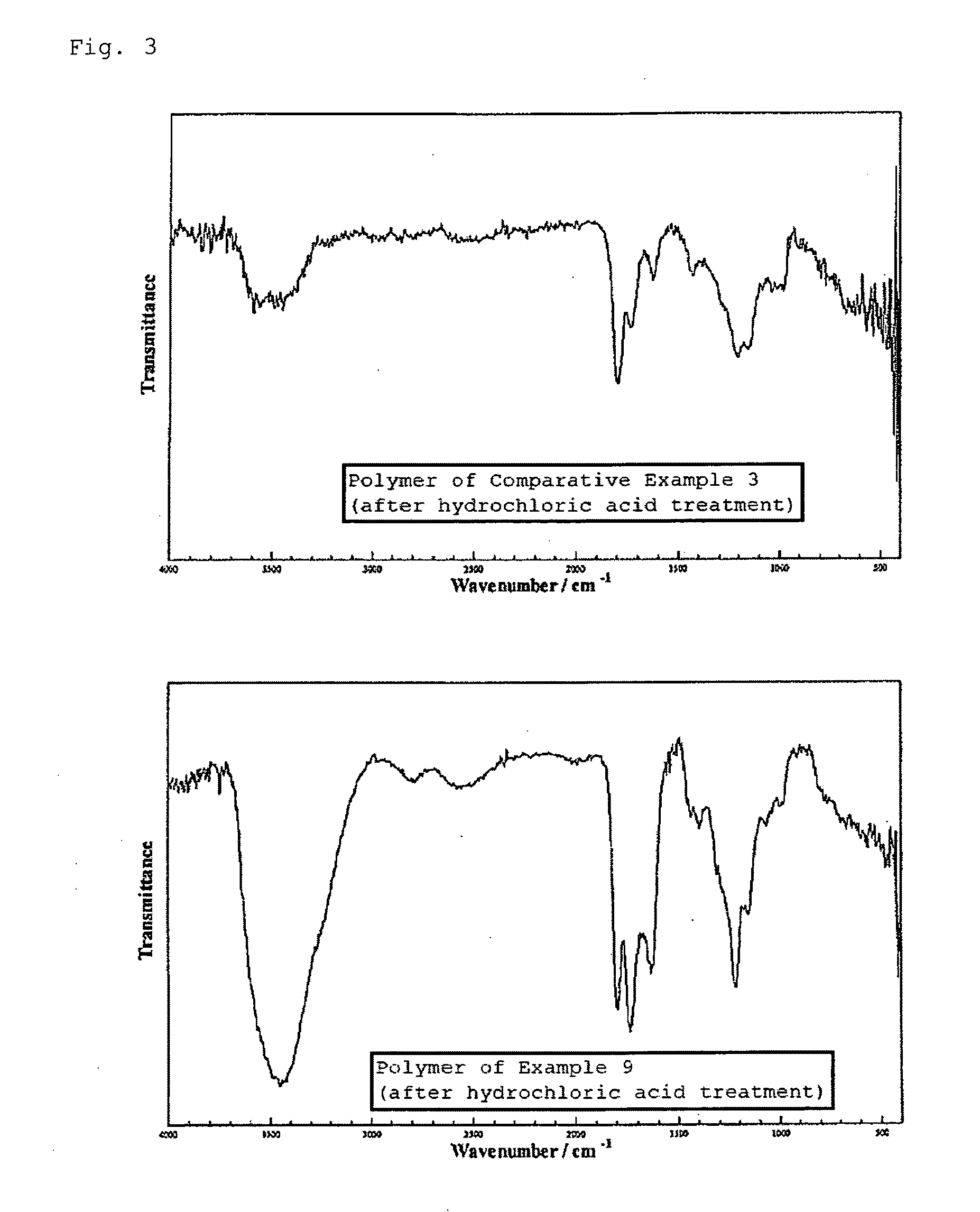Polyfunctional polymer of high stereoregularity and method for producing the same
- Summary
- Abstract
- Description
- Claims
- Application Information
AI Technical Summary
Benefits of technology
Problems solved by technology
Method used
Image
Examples
production example 1
Synthesis of 5-methylene-2-isopropyl-1,3-dioxolan-4-one
[0130]43.6 g (0.60 mol) of isobutyl aldehyde, 62.5 g (0.55 mol) of L-lactic acid, and 1.06 g (0.05 mmol) of p-toluene sulfonic acid were dissolved in 50 ml of n-pentane, and the mixture was refluxed for 8 hours in a 500-ml flask attached to a reflux condenser comprising a Dean-Stark fractionator. After the reaction, the reaction mixture was neutralized and washed with a sodium bicarbonate aqueous solution, followed by extraction with ether. Thereafter, the extract was dried with anhydrous magnesium sulfate. Thereafter, ether was distilled off, thereby giving 62.7 g (yield=79.2%) of 5-methyl-2-isopropyl-1,3-dioxolan-4-one as a diastereomer mixture.
[0131]Next, column chromatography (developing solvent: hexane / ether=20 / 1) was carried out to obtain a mixture of cis-isomer / trans-isomer (steric structural relationship of methyl group and isopropyl) of 80 / 20, and only cis-isomers were separated by optical resolution.
5-methyl-2-isopropy...
production example 2
Synthesis of 5-methylene-2-isopropyl-1,3-dioxolan-4-one
[0139]5-methylene-2-isopropyl-1,3-dioxolan-4-one was synthesized by a different method from that of Production Example 1.
[0140]43.6 g (0.60 mol) of isobutyl aldehyde, 62.5 g (0.55 mol) of ferment lactic acid, and 1.06 g (0.05 mmol) of p-toluene sulfonic acid were dissolved in 50 ml of n-pentane, and the mixture was refluxed for 8 hours in a 500-ml flask attached to a reflux condenser comprising a Dean-Stark fractionator. After the reaction, the reaction mixture was neutralized and washed with a sodium bicarbonate aqueous solution, followed by extraction with ether. Thereafter, the ether solution was dried with anhydrous magnesium sulfate. Thereafter, ether was distilled off, and 65.3 g (yield=82.5%) of the target 5-methyl-2-isopropyl-1,3-dioxolan-4-one was obtained from the reaction mixture through distillation under reduced pressure. The target product was a diastereomer mixture wherein the ratio of cis-isomer / trans-isomer (see...
production example 3
Synthesis of 5-methylene-2-isopropyl-1,3-dioxolan-4-one using racemate of lactic acid
[0142]43.6 g (0.60 mol) of isobutyl aldehyde, 62.5 g (0.55 mol) of a racemic mixture of D-lactic acid and L-lactic acid, and 1.06 g (0.05 mmol) of p-toluene sulfonic acid were dissolved in 50 ml of n-pentane, and the mixture was refluxed for 8 hours in a 500-ml flask attached to a reflux condenser comprising a Dean-Stark fractionator. The following step was performed according to the monomer synthesis of Production Example 2.
[0143]The generation of the target product was confirmed using IR, 1H-NMR. The optical rotation of the obtained 5-methylene-2-isopropyl-1,3-dioxolan-4-one was [α]D=0 (CHCl3).
PUM
| Property | Measurement | Unit |
|---|---|---|
| Length | aaaaa | aaaaa |
| Temperature | aaaaa | aaaaa |
| Length | aaaaa | aaaaa |
Abstract
Description
Claims
Application Information
 Login to View More
Login to View More - R&D
- Intellectual Property
- Life Sciences
- Materials
- Tech Scout
- Unparalleled Data Quality
- Higher Quality Content
- 60% Fewer Hallucinations
Browse by: Latest US Patents, China's latest patents, Technical Efficacy Thesaurus, Application Domain, Technology Topic, Popular Technical Reports.
© 2025 PatSnap. All rights reserved.Legal|Privacy policy|Modern Slavery Act Transparency Statement|Sitemap|About US| Contact US: help@patsnap.com



